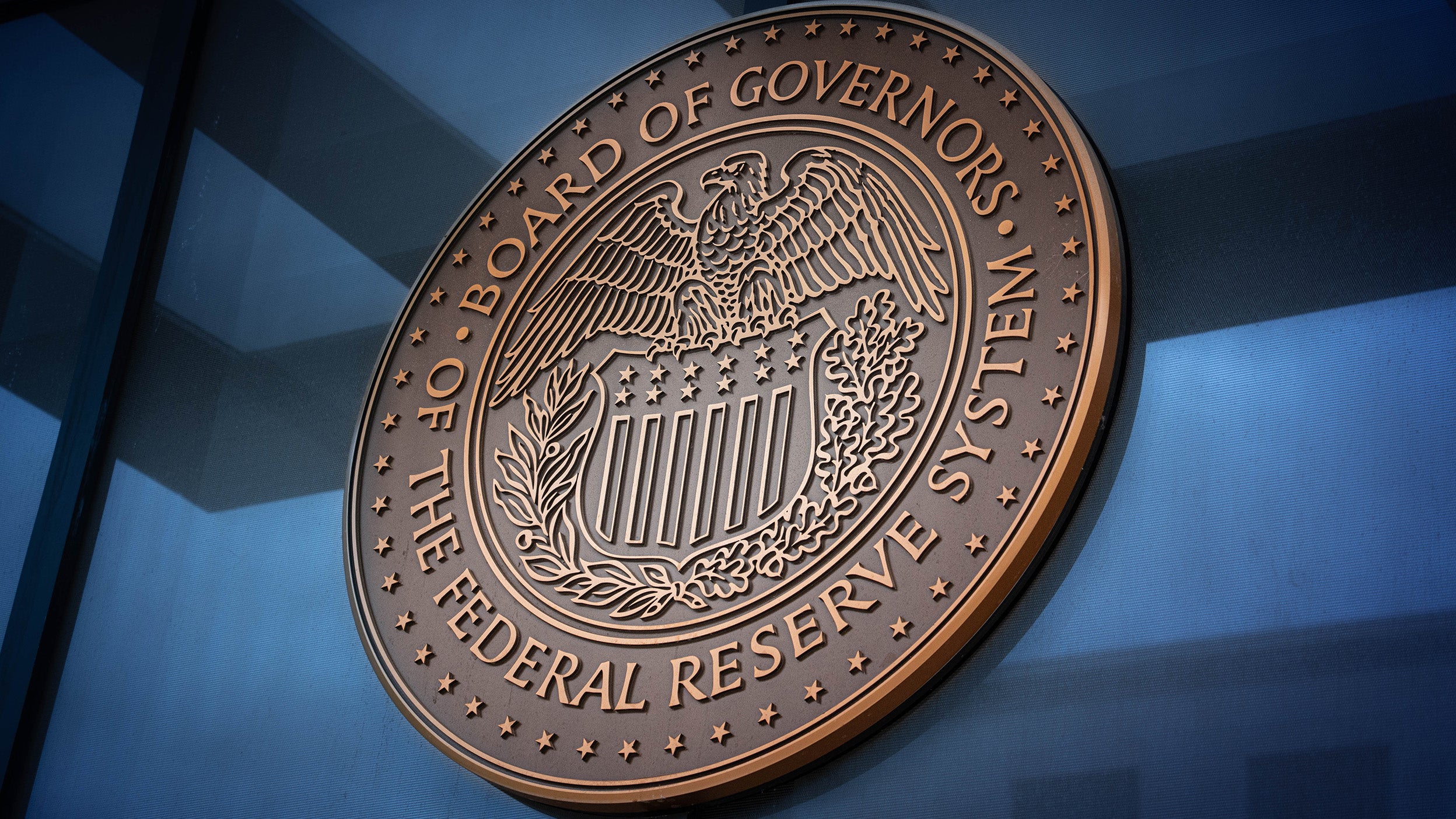
Markets and Economy Navigating Fed monetary policy uncertainty and the markets
A rate cut, which markets are pricing in despite Fed member differences, and an expected improving economy in 2026, could support stocks.

The Fed left its base rate untouched as expected, but two committee members dissented, calling for a 25-basis point cut.
Last week saw a wave of US trade deals as countries raced to secure agreements ahead of the August 1 tariff deadline.
The dominance of artificial intelligence-related stocks shows no signs of letting up, as earnings exceeded expectations.
Last week was touted as one of the more important weeks on the economic and earnings calendar. It didn’t disappoint.
Current concerns about stagflation may be overstated, but the combination of slowing growth and rising goods prices represents a less favorable outcome than what might have occurred without the sharp increase in US tariffs. Markets are primarily focused on the deceleration in growth — as evidenced by stock market weakness in the face of weaker labor data.2 Short-term US interest rates have dropped significantly as investors anticipate future rate cuts.3 Meanwhile, inflation expectations — measured by the 3-year and 5-year US Treasury breakeven rates — declined following the jobs report, suggesting that investors don’t expect recent goods price increases to result in sustained inflation.
The Fed left its base rate untouched as expected, but two committee members dissented, calling for a 25-basis point cut. That is the first time since 1993 that two members voted against the rest of the committee. It’s tempting to see that as somewhat dovish and as a sign that the next rate cut might come sooner rather than later. Fed Chair Jerome Powell was tight-lipped in the press conference, however, maintaining that inflation risks are still being weighed and most members haven’t yet seen enough weakness in the labor market to justify cutting rates. On balance, his comments were received by the market, and us, as hawkish. By Friday, before the payroll report, the market pricing was for just 37 basis points of rate cuts through December.
Ahead of the FOMC meeting, the Job Openings and Labor Turnover Survey (JOLTS) report showed that few workers are being laid off still, but the rate of job openings slowed. This data signals a marginally slower, though not collapsing, labor market. Then on Friday. August 1, the non-farm payroll report showed that the number of jobs added to the US economy in July was fewer than expected: 73,000 vs. 104,000. But it was the revision to the May and June numbers that was the bigger surprise (June fell from 147,000 to just 14,000) and those numbers suggest a greater slowdown in the labor market than many expected. Following the payroll report, 50 basis points of cuts were priced for the Fed through December.4
It wasn’t all bad on the data front, however. Second-quarter gross domestic product (GDP) data pointed to a better-than-expected 3% rate of growth in the US economy, partly resulting from better import and export data. Personal consumption too was a little stronger than the previous month.5
Our read of this data is that while the US economy isn’t flashing recessionary signals, it’s slowing, and the Fed will be paying very close attention to the labor market. If the data continues along this path in the coming months, then it’s likely to justify more members (and perhaps all of them) voting to cut rates once or twice in 2025. The question we’re asking now is how the Fed will interpret the higher inflation prints that are very likely to materialize in the coming months. As a one-off result of tariffs, or something more insidious?
The dominance of artificial intelligence-related stocks shows no signs of letting up, as earnings continue to exceed even the loftiest of expectations. Fueled by massive investment in areas like artificial intelligence (AI), cloud computing, and data infrastructure, tech giants Microsoft and Meta reported blowout earnings results last week.6 Perhaps, just as importantly, forward guidance was equally strong with both companies committing to increase capital expenditure in the months ahead. This is projected to mean hundreds of billions of dollars of new investment, potentially benefiting stocks throughout the broader tech sector and AI ecosystem, such as chipmakers.
Heavyweights Apple and Amazon also reported results last week, and while both companies topped earnings estimates, forward guidance was generally more mixed. Yet taken together, big tech earnings clearly continue to exceed expectations, fueled by past investments that appear to be paying off, which could encourage further AI spending as companies compete to gain an edge.
European earnings season has not been as strong as the US in terms of the headline figures, but there have been some high-profile misses and big stock falls — Novo Nordisk as the main example. But earnings are still coming in better than consensus forecasts, and some companies such as Rolls-Royce surged to new heights after increasing guidance.7
Currency strength was cited by many as a reason for not performing better, though the surge in exports to the US as companies sought to get ahead of tariffs meant that many exporters delivered strong earnings per share (EPS) growth.
Last week saw a wave of US trade deals as countries raced to secure agreements ahead of the August 1 tariff deadline. South Korea, Vietnam, Cambodia, and Thailand managed to ink deals that see tariff rates lowered compared to what was originally announced on Liberation Day, while the US receives greater access to sell goods in each countries’ market. South Korea also agreed to invest $350 billion in the US, following a similar $550 billion pledge from Japan, and $600 billion from the European Union. While the US president and the media talk of “deals,” we think framework is the better descriptor. Many details weren’t clear among the parties themselves, let alone lowly market participants such as us. Still, the important point is the tails on trade risks have been narrowed and risk assets have largely responded positively to that news as we’d expect.
Hours before the deadline, the Trump administration announced new baseline tariffs rates:
The new rates are expected to take effect August 7.
Certain trading partners such as Mexico received extended deadlines as negotiations with the US remain ongoing. Canada, on the other hand, was hit with a new 35% tariff rate (up from 25% previously) with the Trump administration citing border security, and disagreements around conflict in the Middle East, as the primary cause.
Tariffs as a foreign policy tool is a development worth keeping an eye on. Last week’s trade talks between the US, Cambodia, and Thailand were made contingent on the two Southeast Asian countries first ceasing hostilities with each other, as the two nations had been entangled in an escalating border dispute. Another trade-related foreign policy development was the recent surprise 25% tariff on India, which was immediately followed by criticism from President Trump about the country’s years-long purchases of Russian energy. As the US seeks to ramp up economic pressure on Russia in the coming weeks, and potentially countries that continue to do business with it, tariffs may increasingly be used to achieve US foreign policy goals — not just economic ones.
Date |
Region |
Economic release |
Importance |
|---|---|---|---|
Aug. 5 |
US |
ISM Services Purchasing Managers’ Index PMI |
Gauges the health of the services sector, a major component of US gross domestic product (GDP) |
|
US |
ISM Services Business Activity |
Reflects current demand and momentum in the services sector |
|
US |
ISM Services Employment |
Indicates hiring trends in the services sector |
|
US |
ISM Services Prices |
Offers insight into inflationary pressures in services |
|
Global |
Meetings between the Organization of the Petroleum Exporting Countries (OPEC) and the Joint Ministerial Monitoring Committee
|
Can influence global oil prices and inflation expectations |
Aug. 6 |
UK |
Construction Purchasing Managers’ Index |
Measures construction sector activity, a leading indicator of economic health
|
|
US |
Global Supply Chain Pressure Index |
Tracks global supply chain stress, relevant for inflation and production. |
Aug. 7 |
UK |
Bank of England interest rate decision |
Key monetary policy decision impacting the British pound and global markets |
|
US |
Weekly unemployment claims |
Timely indicator of labor market conditions
|
Aug. 8 |
US |
Economic Heterogeneity Indicators |
Highlights disparities across sectors or regions
|
|
US |
Survey of Consumer Expectations |
Influences monetary policy via consumer sentiment and inflation expectations
|
Aug. 8 |
US |
Wholesale Trade Report |
Offers insight into inventory levels and demand trends
|

A rate cut, which markets are pricing in despite Fed member differences, and an expected improving economy in 2026, could support stocks.

We believe global equities may continue to rise in the new year, and we expect new opportunities to be unlocked as market leadership evolves.

Get insight on the recent sell-off in the artificial intelligence trade, the potential for a Santa Claus rally, and the K-shaped economy.
Important information
NA4715851
Image: Kmatta / Getty
Some references are US-specific and may not apply to Canada.
All figures are in US dollars unless otherwise stated.
All investing involves risk, including the risk of loss.
Past performance does not guarantee future results.
Investments cannot be made directly in an index.
This does not constitute a recommendation of any investment strategy or product for a particular investor. Investors should consult a financial professional before making any investment decisions.
A basis point is one-hundredth of a percentage point.
Earnings per share (EPS) refers to a company’s total earnings divided by the number of outstanding shares.
The Federal Open Market Committee (FOMC) is a committee of the Federal Reserve Board that meets regularly to set monetary policy, including the interest rates that are charged to banks.
Gross domestic product (GDP) is a broad indicator of a region’s economic activity, measuring the monetary value of all the finished goods and services produced in that region over a specified time period.
The Job Openings and Labor Turnover Survey (JOLTS) from the US Bureau of Labor Statistics produces data on job openings, hires, and separations.
An inflation print refers to a specific measure of inflation released by a government agency.
Inflation is the rate at which the general price level for goods and services is increasing.
Many products and services offered in technology-related industries are subject to rapid obsolescence, which may lower the value of the issuers.
A policy rate is the rate used by central banks to implement or signal their monetary policy stance.
Purchasing Managers’ Indexes (PMI) are based on monthly surveys of companies worldwide and gauge business conditions within the manufacturing and services sectors.
The risks of investing in securities of foreign issuers, including emerging market issuers, can include fluctuations in foreign currencies, political and economic instability, and foreign taxation issues.
The S&P 500® Index is an unmanaged index considered representative of the US stock market.
Stagflation is an economic condition marked by a combination of slow economic growth and rising price
A trade deficit is an economic measure of international trade in which a country's imports exceed its exports. Therefore, a trade deficit represents an outflow of domestic currency to foreign markets.
In general, stock values fluctuate, sometimes widely, in response to activities specific to the company as well as general market, economic and political conditions.
The opinions referenced above are those of the author as of Aug. 1, 2025. These comments should not be construed as recommendations, but as an illustration of broader themes. Forward-looking statements are not guarantees of future results. They involve risks, uncertainties, and assumptions; there can be no assurance that actual results will not differ materially from expectations.
This link takes you to a site not affiliated with Invesco. The site is for informational purposes only. Invesco does not guarantee nor take any responsibility for any of the content.